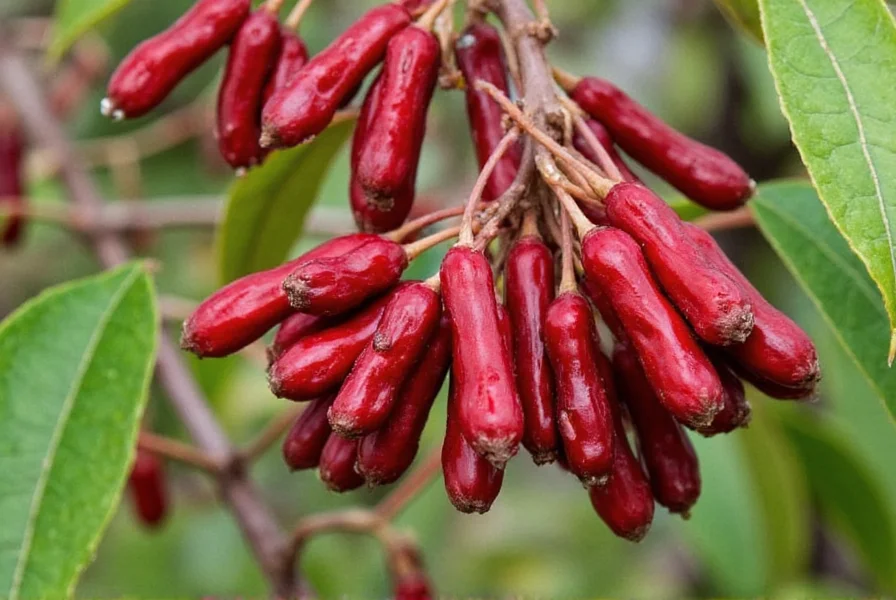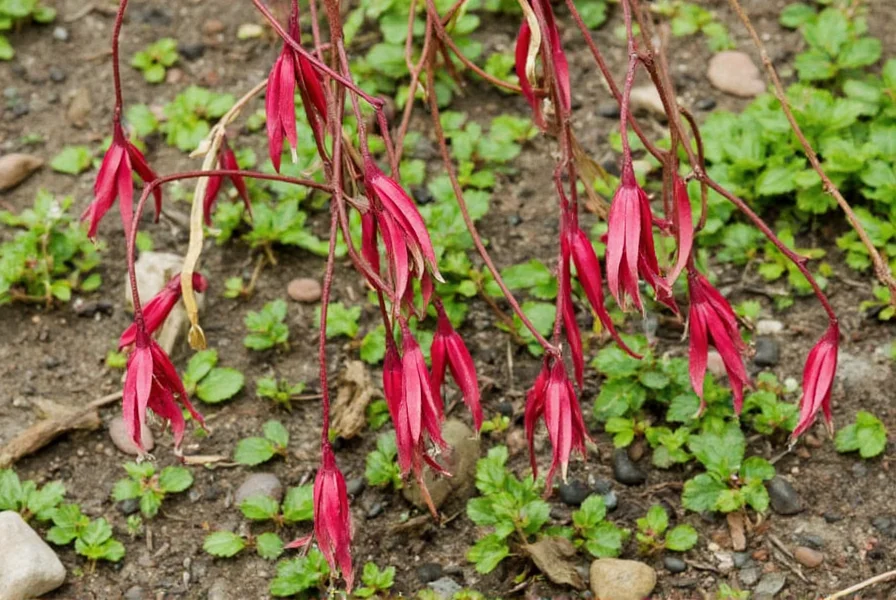Often confused with the culinary spice, Carolina allspice is a beloved native plant that brings unique beauty and fragrance to gardens across eastern North America. This resilient shrub, scientifically known as Calycanthus floridus, has been growing wild in woodlands and along stream banks for centuries before becoming a popular landscape choice.
Understanding Carolina Allspice: More Than Just a Name
The common name "allspice" comes from the spicy fragrance emitted by the plant's crushed leaves and stems, which some describe as a blend of cinnamon, cloves, and citrus. However, Carolina allspice belongs to the Calycanthaceae family, while true allspice (used in cooking) comes from the Myrtaceae family and is native to Central America. This botanical distinction is crucial for gardeners who might mistakenly believe they can harvest edible spices from their Carolina allspice shrubs.
Botanical Characteristics and Identification
Carolina allspice typically grows 6-12 feet tall with a similar spread, forming a dense, multi-stemmed shrub. Its most distinctive feature is the 1-2 inch maroon to reddish-brown flowers that bloom in late spring to early summer. Unlike many flowering shrubs, Carolina allspice produces its fragrant blossoms directly on the stems rather than at branch tips.
The oval, dark green leaves (2-4 inches long) turn yellow in fall, providing seasonal interest. When crushed, these leaves release that characteristic spicy aroma that gives the plant its common name. The bark is smooth and gray on young stems, becoming furrowed with age.
| Feature | Carolina Allspice (Calycanthus floridus) | True Allspice (Pimenta dioica) |
|---|---|---|
| Plant Type | Deciduous shrub | Tropical evergreen tree |
| Native Range | Southeastern United States | Central America, Caribbean |
| Edible Parts | None (fruit is toxic) | Dried unripe berries |
| Hardiness Zones | 5-9 | 10-12 |
| Flower Color | Maroon to reddish-brown | White to greenish-white |
Growing Carolina Allspice: Ideal Conditions
For gardeners interested in adding this native beauty to their landscape, understanding proper growing conditions is essential for success. Carolina allspice performs best in partial shade, particularly in hotter climates where afternoon sun can scorch leaves. In northern regions, it can tolerate more sun.
The plant prefers moist, well-drained soil rich in organic matter but demonstrates surprising adaptability to various soil types. While it naturally grows along stream banks in the wild, established plants show moderate drought tolerance. Consistent moisture during the first growing season helps establish a strong root system.
Landscaping Uses and Benefits
Carolina allspice offers multiple benefits for thoughtful landscape design:
- Naturalized areas: Its spreading habit makes it ideal for woodland gardens and naturalized settings
- Foundation planting: The dense growth pattern works well around building foundations
- Screening: Creates effective visual barriers when planted in groups
- Wildlife value: Provides cover for birds and small animals (though the fruit isn't a significant food source)
- Sensory garden element: The fragrant flowers and leaves engage the sense of smell
Unlike many flowering shrubs that bloom for just a few weeks, Carolina allspice often produces sporadic flowers throughout summer, extending its ornamental value. The plant's tolerance for partial shade makes it valuable for areas where many other flowering shrubs struggle.
Common Misconceptions About Carolina Allspice
Several misconceptions surround this plant, potentially leading to disappointment or safety concerns:
Misconception: Carolina allspice produces edible fruit like true allspice
Reality: The fruit is a dry, woody capsule containing seeds that are mildly toxic if ingested. While not severely poisonous, it should not be consumed.
Misconception: All varieties of Calycanthus have the same fragrance intensity
Reality: Fragrance varies significantly between cultivars, with some selections bred specifically for stronger scent.
Misconception: Carolina allspice requires high maintenance
Reality: Once established, it's remarkably low-maintenance with few pest or disease problems.
Care and Maintenance Guidelines
Proper care ensures your Carolina allspice thrives for decades. These shrubs typically live 20-30 years with appropriate care. Key maintenance practices include:
Pruning: Minimal pruning is needed. Remove dead or damaged branches in late winter. For older plants that become leggy, selective renewal pruning (removing one-third of oldest stems at ground level) every few years encourages vigorous new growth. Avoid heavy pruning as it can reduce flowering.
Fertilizing: Generally unnecessary in decent garden soil. If growth seems poor, apply a balanced, slow-release fertilizer in early spring.
Watering: During establishment (first year), keep soil consistently moist but not soggy. Established plants need supplemental watering only during extended droughts.
Propagation: Can be grown from seed (requires cold stratification), softwood cuttings in summer, or by division. Named cultivars must be propagated vegetatively to maintain characteristics.
Recommended Cultivars for Gardeners
While the species Calycanthus floridus makes a fine garden plant, several cultivars offer enhanced characteristics:
- 'Athens': Features larger, more fragrant flowers and a more upright growth habit
- 'Michael Fay': Known for exceptionally fragrant, deep maroon flowers
- 'Professor Sargent': Produces double flowers with extra petals
- 'Hartlage Wine': A hybrid with Calycanthus occidentalis offering larger flowers
Ecological Importance and Conservation
As a native plant, Carolina allspice plays an important role in regional ecosystems. It provides habitat for native insects and birds, though it's not a major food source. The plant's natural range has diminished due to habitat loss, making garden cultivation valuable for conservation.
Unlike many non-native ornamentals, Carolina allspice doesn't become invasive in natural areas. Its slow growth rate and specific habitat requirements prevent it from outcompeting other native plants. Gardeners choosing this species support biodiversity while enjoying its beauty.
Seasonal Interest Throughout the Year
One of Carolina allspice's most valuable landscape attributes is its multi-season interest:
- Spring: Emerging leaves and the beginning of flowering
- Summer: Peak flowering with sporadic blooms continuing through season
- Fall: Yellow leaf color and interesting seed pods
- Winter: Attractive bark texture and architectural form
This year-round appeal makes Carolina allspice a superior choice compared to many flowering shrubs that offer beauty for just a few weeks annually.
Common Challenges and Solutions
While generally trouble-free, Carolina allspice can occasionally face these issues:
Leaf spot diseases: Usually cosmetic rather than harmful. Improve air circulation and avoid overhead watering to prevent.
Scale insects: Can occasionally infest stems. Treat with horticultural oil during dormant season.
Poor flowering: Often caused by insufficient sunlight or improper pruning. Ensure plants receive at least 4 hours of direct sun and avoid pruning in late summer when flower buds form.

Integrating Carolina Allspice Into Your Garden Design
For optimal visual impact, consider these design strategies when incorporating Carolina allspice:
- Plant near pathways where the fragrance can be enjoyed when brushed against
- Combine with other shade-tolerant natives like ferns, hostas, and native azaleas
- Use as a backdrop for spring-blooming bulbs that will finish flowering before the allspice leafs out
- Position where the maroon flowers create contrast against green foliage of neighboring plants
- Group three or more plants for a naturalized effect
Remember that Carolina allspice grows slowly, reaching about half its mature size in five years. Patience is rewarded with a long-lived, low-maintenance specimen that becomes more beautiful with age.
Frequently Asked Questions
Is Carolina allspice actually related to the spice allspice?
No, Carolina allspice (Calycanthus floridus) is not related to true allspice (Pimenta dioica). The name comes from the spicy fragrance of its leaves and stems, which resembles a blend of spices. True allspice is a tropical tree in the myrtle family, while Carolina allspice is a deciduous shrub native to eastern North America.
Can you eat Carolina allspice fruit or flowers?
No, Carolina allspice fruit and flowers are not edible. The fruit contains seeds that are mildly toxic if ingested. While not severely poisonous, consuming any part of the plant may cause stomach upset. Unlike true allspice, Carolina allspice has no culinary uses.
How much sun does Carolina allspice need to thrive?
Carolina allspice prefers partial shade, particularly in southern climates where intense afternoon sun can scorch leaves. In northern regions (zones 5-6), it can tolerate more sun. The ideal location receives morning sun and afternoon shade. Too much shade reduces flowering, while too much sun in hot climates causes leaf burn.
Does Carolina allspice attract pollinators?
Carolina allspice has limited value to pollinators. Its flowers don't produce nectar and have a somewhat inaccessible structure, so they don't attract many bees or butterflies. Some beetles may visit the flowers, as they're thought to be beetle-pollinated in nature. While not a major pollinator plant, it still contributes to garden biodiversity.
How fast does Carolina allspice grow?
Carolina allspice is a slow-growing shrub, typically adding 6-12 inches per year under ideal conditions. It may take 5-7 years to reach half its mature size. This slow growth contributes to its longevity, with well-maintained plants living 20-30 years or more. Don't be discouraged by its initial slow growth rate—patience is rewarded with a long-lived, beautiful specimen.











 浙公网安备
33010002000092号
浙公网安备
33010002000092号 浙B2-20120091-4
浙B2-20120091-4